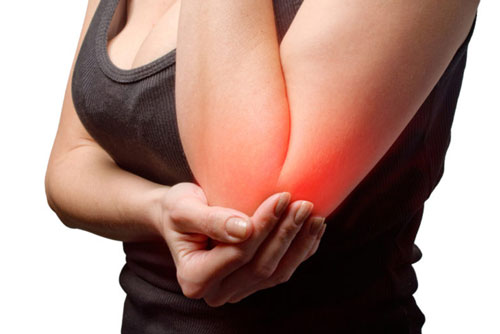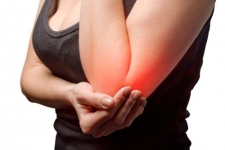
Tennis elbow, aka lateral epicondylitis, affects the tendon that runs along the outside of the elbow and is caused by playing racquet sports or working in a variety of professions that involve repetitive arm movements. Symptoms include pain or burning along the outside of the elbow, as well as problems with gripping items. This particular ailment tends to improve with rest, physical therapy, or the use of a brace.
Now, medial epicondylitis, or golfer’s elbow (also called little leaguer’s elbow when it occurs in children), affects the tendons that run along the inside of the elbow and is caused by the repetitive throwing motion that’s seen in baseball, or the downward swing of a golf club. Medial epicondylitis causes pain along the inside of the elbow that is particularly noticed with wrist movements. This condition typically improves with conservative treatment methods, such as rest, ice, and anti-inflammatory medications, such as ibuprofen.
Olecranon bursitis – often called “student’s elbow” – affects the bursa (small sac of fluid that helps to protect and lubricate the joint) that is responsible for protecting the “pointy” portion of the elbow. It can be caused by leaning on the elbow for an extended period of time, a blow to the joint (like hitting your elbow on a doorframe), or other conditions like arthritis or infection. Symptoms include pain, swelling, and difficulty with elbow mobility. This particular ailment can be treated by wearing elbow pads or taking medication; in severe and/or chronic cases, surgery may be necessary.
If you are experiencing elbow discomfort, call us today to set up a consultation. Dr. Hurlbut’s team uses the most advanced treatment options for recovery of maximum mobility, strength, and return of function. Dr. Hurlbut’s passion has been the diagnosis and treatment of shoulder, elbow and hand injuries but he also continues to practice in many areas of orthopaedics including total joint replacement and knee arthroscopy.

